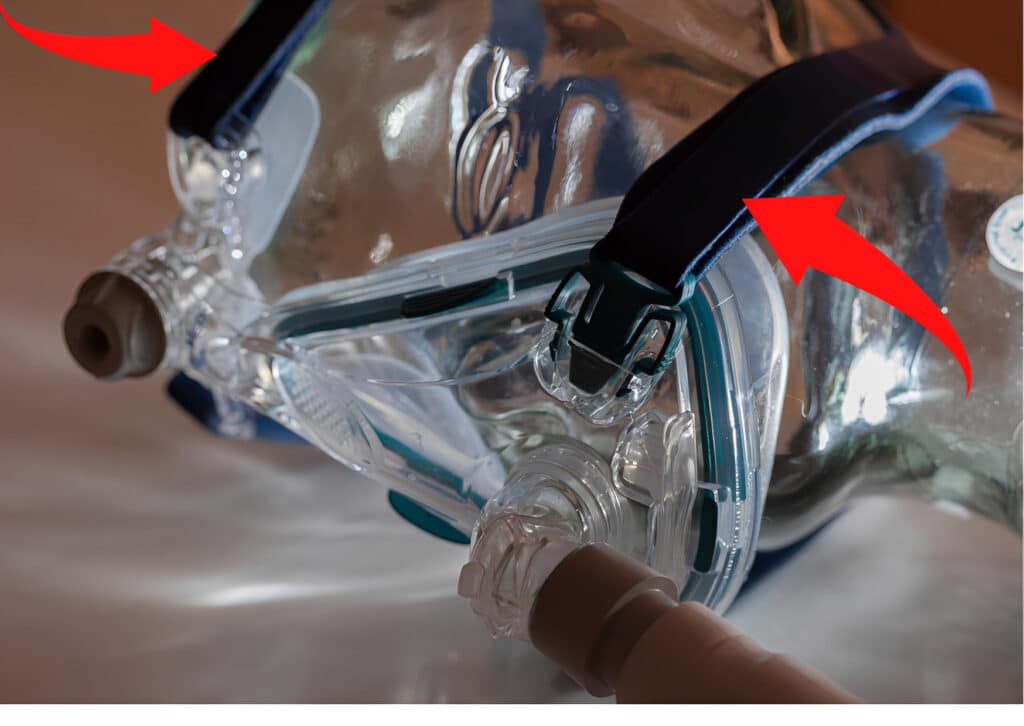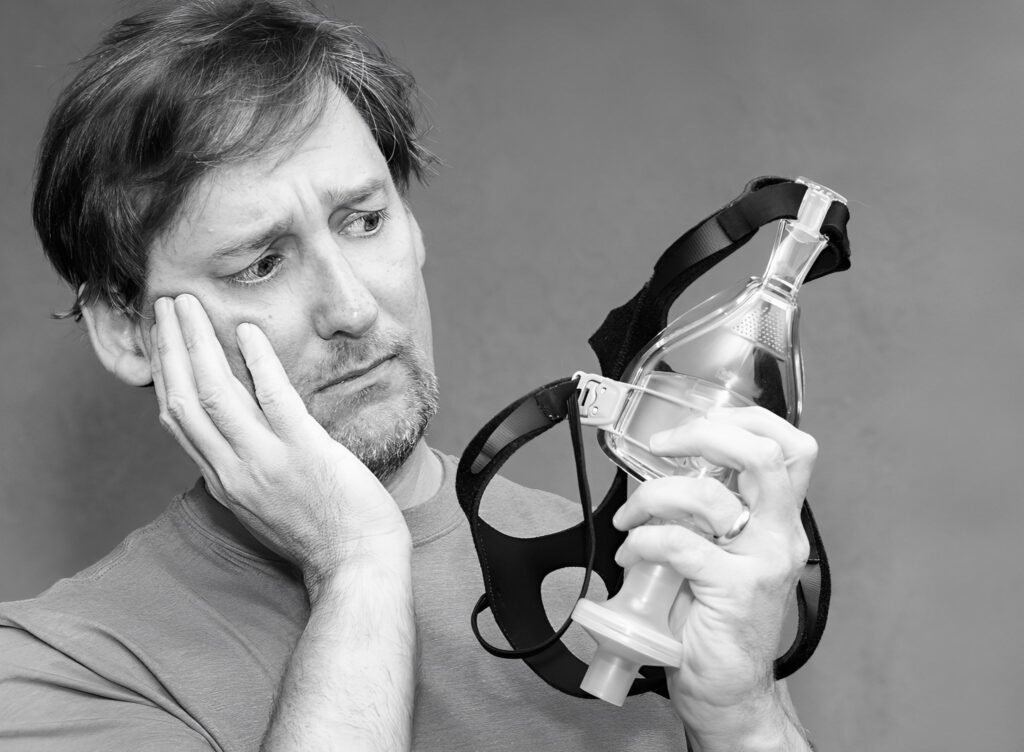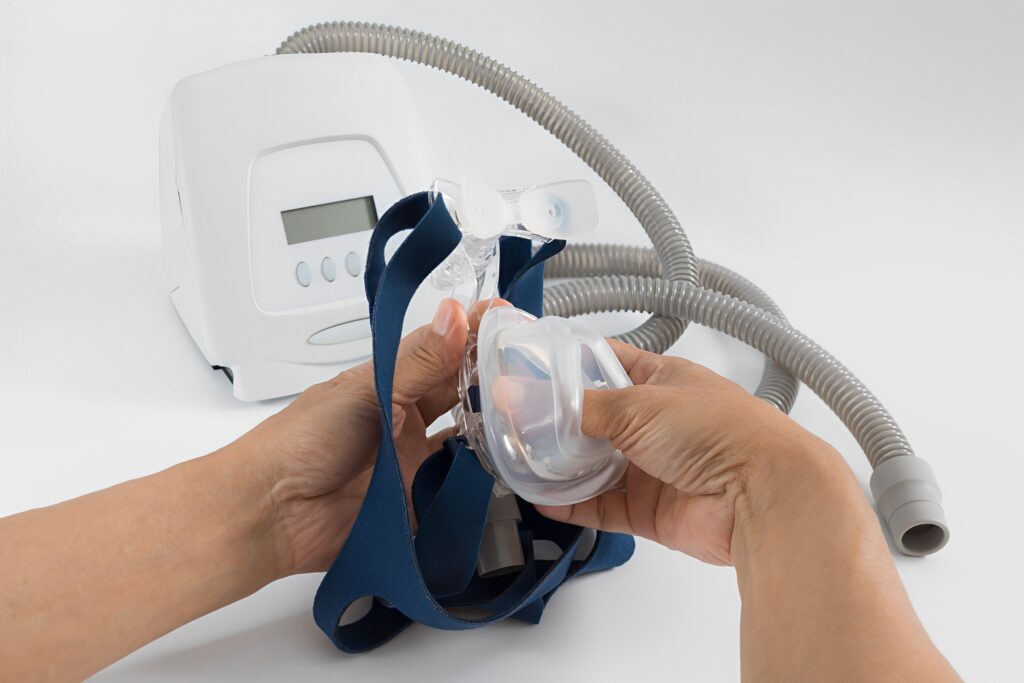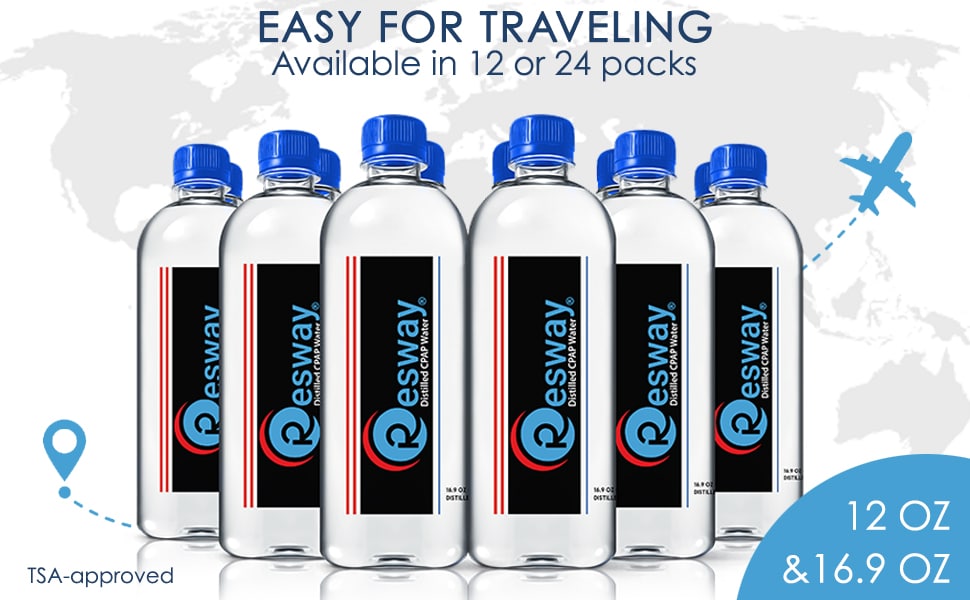There are many CPAP accessories out there, including CPAP tubing, CPAP masks, and CPAP pillows. But have you heard about CPAP headgear?
CPAP headgear is a device that is worn over the head and face in order to secure your mask for your CPAP therapy. CPAP headgear helps to secure the CPAP mask in place and maintain a comfortable, tight seal. It is important to choose a CPAP headgear that is comfortable and fits well, as it will need to be worn every night.
In this blog post, we will explain what CPAP headgear is and what it is used for, as well as how to properly put it on your face, when to replace it, and many other topics! What are you waiting for, then? Continue reading to learn more!
What is CPAP Headgear?

Headgear refers to the system of straps worn around the head to keep a mask in place. When you wear your mask, the chin support is the optional attachment that assists in keeping your mouth closed to protect your airway.
To keep the mask in place, every type of mask needs some headgear, which usually consists of straps. Going through a professional CPAP fitting session with a technician is crucial to properly secure your headgear without overtightening it, which can cause markings to appear on your face. The wearer can also add supplemental support items to their headgear.
One example is a detachable chin support worn during sleep to help keep the mouth closed. Oral breathing, also known as mouth breathing, can be reduced with chin support, but this may have the unintended consequence of reducing the efficacy of your CPAP treatment for sleep apnea.
Broken buckles, material that has become stretched out or loose on the straps, or Velcro that no longer maintains its grasp are common issues that lead to the need for new headgear.
How Do You Properly Fit a CPAP Headgear?
- Position the top of the mask so that it rests directly below the center of the bridge of your nose.
- Swing the mask down over your nose and mouth and secure it in place with the straps while you bring the headpiece over your head.
- After that, connect the lower strap to the mask by connecting the clips to both sides.
***Keep in mind that a well-fitting garment does not always have to be extremely snug. The mask should fit over your nose and mouth without exerting undue pressure, and you should rest comfortably.
Now, when you feel as though the mask is pressing too hard on your face, this indicates that the headgear is too tight.
To make a change,
- You need to simultaneously detach the velcro on both sides of the upper strap, then pull it to make it tighter or detach it to make it looser.
- After adjusting the mask’s fit so that it is comfortable against your face, reattach the velcro. Adjustments to the bottom strap can be made in the same manner.
As soon as you have achieved a suitable fit, you should turn on your device so that it can immediately begin applying pressure on the mask.
Does CPAP Headgear Have Different Sizes?
Continuous positive airway pressure (CPAP) headgear used to treat sleep apnea is available in various designs, sizes, and styles. Because everyone’s requirements, preferences, and facial contours are unique, you may have to experiment with various types of CPAP masks before finding the one that works best for you.
Different brands and kinds of masks can have varying sizing options. You may only find the optimal level of convenience and ease once you experiment with a few other models and dimensions.
CPAP Headgear Causing You Pain? Here`s What To Do:

Put on a face mask that suits you well
Certain mask combinations and headgear may not fit your face correctly, resulting in unwanted friction. If this is the case, choose a cover that suits your face snugly, so there is no friction.
Replace your supplies
A worn-out headgear can create discomfort by irritating the neck, hair, and cheeks, a significant source of mask pain. As your supplies wear out, they will become less comfortable and forgiving, increasing friction. If the seals on your mask are worn out, you must pull them tighter to prevent air from leaking.
Because of this, it is essential to maintain a consistent plan to replace your CPAP supplies regularly. Most insurance companies will supply you with a calendar indicating when various supplies should be replaced.
This ensures that your mask will always have the most recent components. When people reflect on how long it has been since their last refresh, they frequently discover that it is well past the time to purchase a new mask or cushion.
How Often Should You Replace Your CPAP Headgear?

The mask is held in place on your face by these components, including straps around your head and under your chin. The helmet may become stretched out and lose its flexibility over time and use, which may result in over-tightening and discomfort. You must replace it every 6 months.
If you discover that you need to tighten your headgear to obtain a good seal or if you notice that it has stretched out over time, it is likely time to replace it.
What Cleaning Materials Should I Use For It?
- Warm water
- Mild detergent
It would be best to wash your mask and headgear by hand by rubbing them gently in warm water (about 30 degrees Celsius or 86 degrees Fahrenheit) with a gentle dishwashing solution.
After giving each component a thorough washing in water that is fit for human consumption, it should be laid out in the shade to dry naturally. Please refer to the user handbook that came with your mask.
Conclusion
CPAP headgear is an essential part of using a CPAP machine. It keeps the air pressure from your lungs going into the machine and prevents leaks. There are many different types and sizes of CPAP headgear, so it’s important to find the right one.
If you’re experiencing pain while wearing your headgear, you can do a few things. First, ensure that the size is correct and fits snugly but not too tightly. You may also need to adjust the straps on the back of the headgear.
If none of these solutions work, it may be time to replace your headgear. Be sure to clean it regularly with mild soap and water or a special cleaning solution designed for CPAP gear.
Contact us today or visit our website CPAPwater for more information about our products and services or to schedule a discovery call. If you suffer from obstructive sleep apnea, we’d love to help you take the first steps toward a better night’s rest.
What did you learn from reading this blog post? Leave a comment below!




